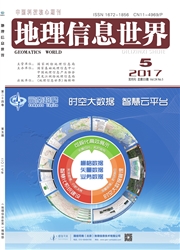

 中文摘要:
中文摘要:
以20世纪80年代中期以来的中国省际人口迁移流为研究对象,引入网络权重矩阵表征流数据间的空间关系,分别从全局角度和局部尺度使用空间自相关测度指标Morans I分析迁移流数据的空间效应及其变化过程.结果表明,从全国视角分析,中国省际人口迁移过程中存在着非常显著的空间自相关效应,且迁出地所表现出的空间效应相对强于迁入地和迁移流的空间效应;从局部视角分析,中国省际人口迁移活动呈现出活跃度逐渐上升的变化态势,迁出热点主要集中于中部地区,迁入热点多集中于东南部沿海地区;众多迁移人口所选择的迁入地越来越表现出集中性.网络自相关性较强的迁入流所指向的迁入地由最初较为多样的选择,逐渐转变为仅局限在广东、北京、上海、江苏和浙江,呈现出空间集聚效应逐步增强的趋势.
 英文摘要:
英文摘要:
This paper uses Chinese interprovincial migration flow from the mid--1980s as the object of study and analyzes the change of spatial autocorrelation effect of migration flows using the Moran's I index from the global and local view respectively. The conclusions are as follows: From the global view, the spatial autocorrelation effect of Chinese interprovincial migration is very significant, and the spatial autocorrelation effect of the origin is relatively more significant than that of the destination and the/lows; From the local view, Chinese interprovincial migration flows have showed a trend of increasing activity. Most of the hot spots of origin are located in the central region and most of the hot spots of destination are located in the southeast region. By analyzing the network autocorrelation effects of the migration flows, we realize that the chosen destinations are more and more concentrated, which are located in Guangdong,Beijing, Shanghai, Jiangsu and Zhejiang, whose spatial autocorrelation effect is more and more significant.
 同期刊论文项目
同期刊论文项目
 同项目期刊论文
同项目期刊论文
 期刊信息
期刊信息
